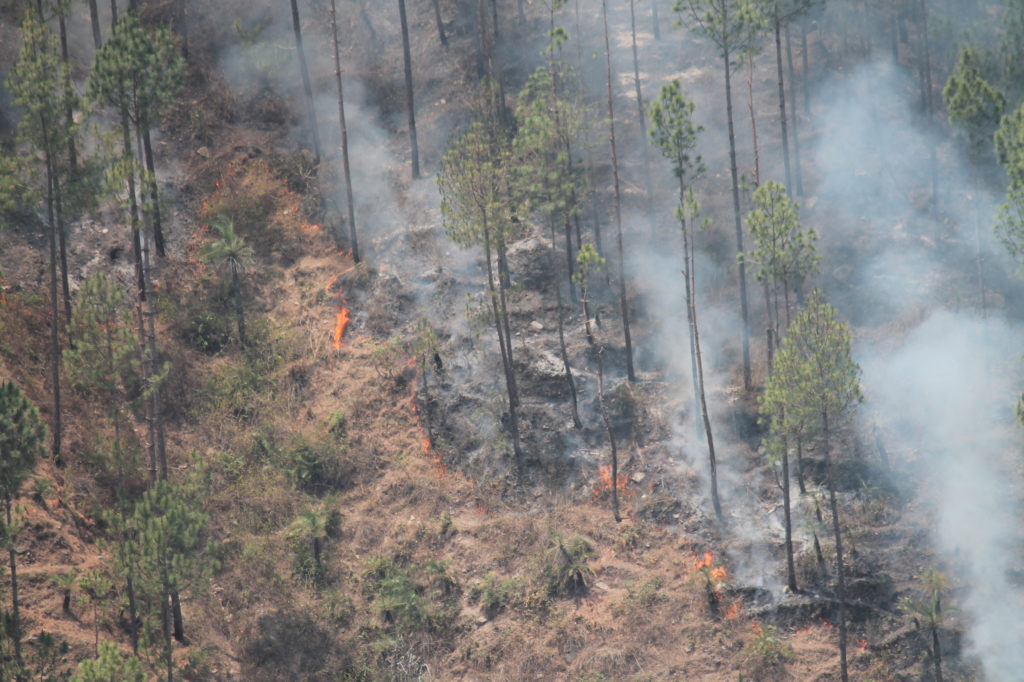Fires Ravage Himalayan Forests, Threatening Health & Biodiversity
Apr 23, 2021 | Pratirodh Bureau
FILE PHOTO: Forest fires can be seen in Uttarakhand. Humans have crossed seven of the nine "safe limits" that allow for human life on earth, according to a new study (Image: Joydeep Gupta/The Third Pole)
Wildfires described as “the worst in a decade” have engulfed Himalayan mountain states in a thick haze and killed at least eight people in the Indian states of Himachal Pradesh and Uttarakhand. Seven were killed in neighbouring Nepal, where wildfires raged across several districts and forced a four-day school closure.
Smoke from these wildfires made the air quality of Nepal’s capital Kathmandu the worst in the world in early April, with the air over Bhutan and northern Bangladesh also hazardous. The haze was strengthened by more wildfires along the Nagaland-Manipur border in northeast India.
Aside from hazards to human health, these fires pose major threats to forest and biodiversity conservation. Wildfires endanger people, homes, farms, animals and release carbon dioxide – the world’s most ubiquitous greenhouse gas and a primary driver of climate change. According to one estimate, the 2021 wildfires in Uttarakhand alone have led to the release of 0.2 megatons of CO2 – the highest since 2016.
November to May is wildfire season in the Himalayas, with a peak in March-April. However, administrators and experts described the current wildfires as the worst in a decade or more. Since December 2020, over 1,000 wildfires have been recorded in Uttarakhand – a state that has over 45% forest cover in contrast to India’s overall forest cover of 21.67%. In Nepal, nearly 200,000 hectares of forest area are lost to wildfires each year.
Almost all forests in South Asia are surrounded by human settlements, with locals dependent on them for essentials such as fodder, fuelwood and housing material.
India’s National Disaster Management Authority (NDMA) said most of the fires are caused by humans, sometimes deliberately. But experts said that dry forest floors caused by scant rainfall or snowfall in the past two winters have helped the fires to spread in the central and eastern Himalayas. Additionally, Uttarakhand recorded a rainfall deficiency at 18% in 2019 and 20% in 2020, even as India as a whole had near-normal monsoon rainfall.
